
Click Motor to go Home
The Classic Factor
powered by style



 Art & Design Gallery
Links
Art & Design Gallery
Links
Contact Julian via theclassicfactor@gmail.com

Click Motor to go Home
The Classic Factor
powered by style



 Art & Design Gallery
Links
Art & Design Gallery
Links
Contact Julian via theclassicfactor@gmail.com
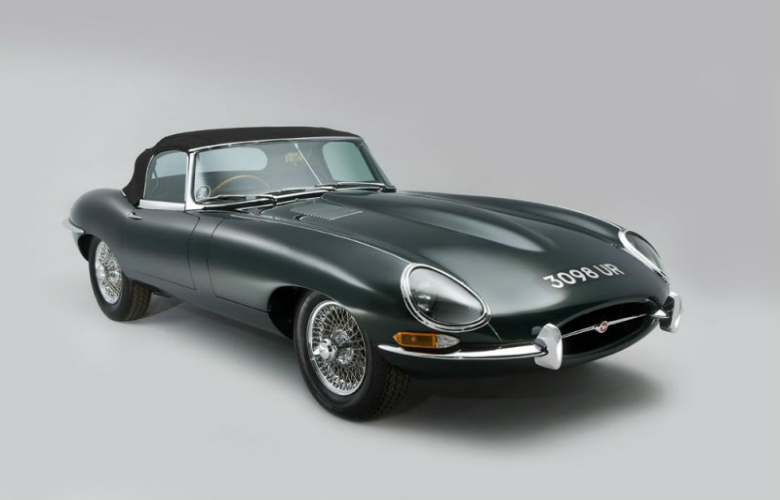
What is the most instantly recognisable sportscar shape of all time? One heck of a question! And yet many a petrolhead would not even pause to ponder...the E-Type Jag, of course, they would declare. Why so sure? Because the phrase 'long, low and sleek' does not even begin to do it justice. Mere words! The body was derived from the D-Type - a sports racing masterpiece and a winner of the Le Mans 24 Hours endurance race. Not only did the E-Type cut cleanly through the air - but it did so unerringly. The car's cross-ply tyres were supermodel skinny, but in the context of the roadholding as a whole they induced nary a wobble.
The E-Type rapidly became a Sixties icon. Anyone who was anyone wanted one. Pop stars, footballers, royalty - the waiting list for the car was very democratic! By the end of its time at the top the E-Type had transcended superstardom, to be exhibited at New York's Museum of Modern Art. Now, that is a design classic!
The E-Type's power came courtesy of Jaguar's 3.8-litre XK engine, which though it had been around the block a few times over the preceding few years, was still virile enough to give the 'sticky bits' something to think about! The graceful elevation adorning the bonnet is there primarily to accomodate the tall proportions of the XK powerplant. Both aesthetically and technically, then, the car was a tour de force. Any shortlist of items defining Swinging London would, by default, contain a reference to the E-Type Jag. Cool, clean, curvaceous...aaagh! - sometimes you just have to put the dictionary down and admit defeat.
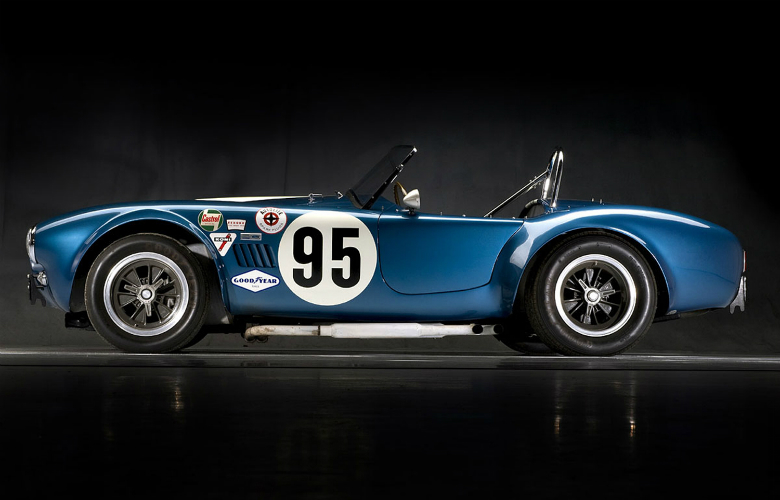
For all of the longevity of the 'special relationship', how often do the U.S. and the U.K. combine to produce something really...well, special! There is one precedent, for sure - the mighty A.C. Cobra. When Texan Carroll Shelby sought permission from A.C. Cars in England to insert a Ford V-eight into their svelte bodywork, the curtain was about to be raised on a truly memorable muscle car.
The sinuous lines of the Cobra were clearly drawn from the A.C. Ace - an elegant British sports-car of the time - but the 'beefcake' was all-American! Shelby was a successful racer and wanted horsepower and plenty of it. The Ford lump obliged to the tune of 490 wild mustangs in seven-litre form. When conjoined with A.C.'s light alloy shell, torque on tap from the pushrod V-eight and four discs to slow the plot down, the scene was set for big fun in a big country!
The cars were sold in the showrooms as Shelby Cobras and Ford Cobras...in race trim, they were Shelby American Cobras. To the cognoscenti, none of this masked their semi-Anglo origins. Only a tad shy of a thousand of them were built - but their legacy will live on for as long as men like Carroll Shelby are compelled to compete. Presidential in its impact, the A.C. Cobra is widely acknowledged as one of the most important cars on the planet.
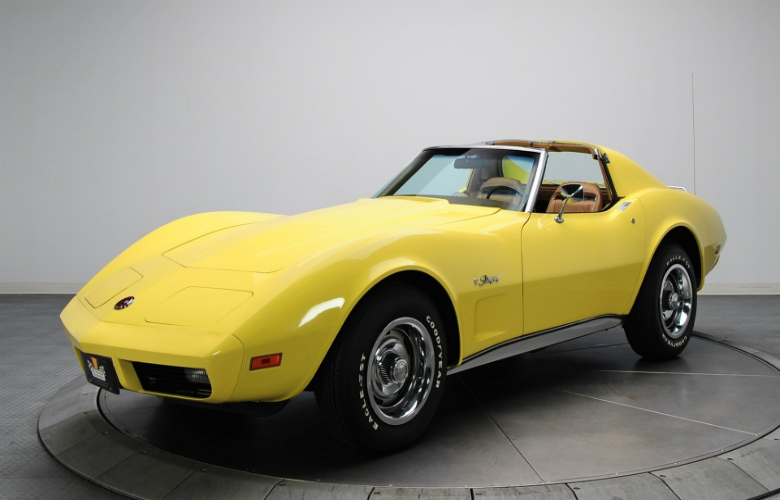
Few cars have a moniker as iconic as the Stingray, nor one that does them such justice. In the hands of the unwary, the big Corvette could deliver a very painful sting indeed! Fibre-glass bodywork (avante-garde at the time) meant that the car was supremely light. Big-block engines, high compression ratios, and even Rochester fuel injection with the L76 model gave robust performance all-round - which was exactly where the disrespectful would end up heading!
The car came in many guises over the years - coupés, convertibles and classy, collectable sports-cars. They all retained that uniquely free-flowing form of the Stingray. The inspiration for its iconic shape had come from the Mako-Shark 'dream car'. Dream cars were just that - concepts never intended to traverse highways, but rather to work potential buyers up to a fever-pitch of excitement. Their hey-day was the 1950s - as with books and movies, science fiction inspired some truly 'fantastic' designs. Enter the Stingray!
The 1968 model was nicknamed the 'Coke bottle'. Andy Warhol would have been proud! It says it all about the car and its heritage. As American as apple-pie, the Stingray encapsulates a nation and an era. 'Here's looking at you, car!'
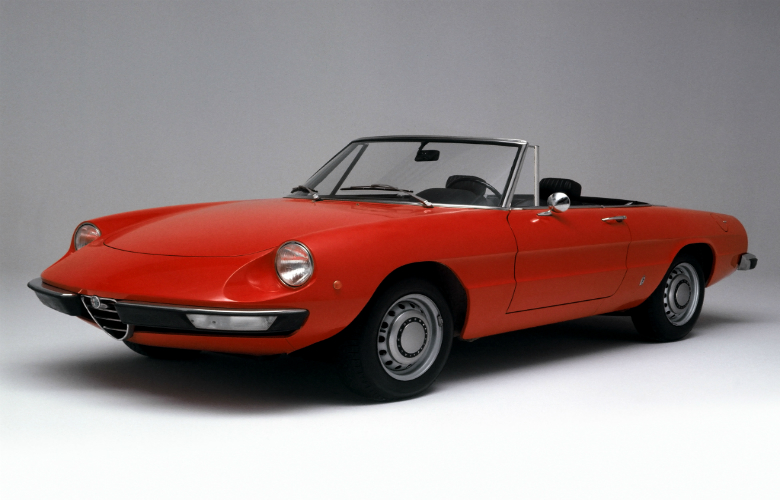
Few marques can summon up the cool mystique and romance of Alfa Romeo. Few models do more justice to their marque than the Spider. Add the name of Battista Pinanfarina to this heady mix and superlatives start to seem a tad inadequate. The rounded lines of the 'boat-tail' rear of the Spider could only have been crafted in Turin - home of the legendary Pinanfarina design house.
The Duetto Spider was named in reference to the twin-cam spec of Alfa's iconic engine - as well as the two-seater cockpit. In technical terms, the Alfa was a tour de force, insomuch as it was outstanding in pretty much every department.
The Spider's status was assured when it became a celluloid hero - appearing alongside Dustin Hoffman in the 1967 film 'The Graduate'. The car had made its début only a year before - at the Geneva show. A stellar progress, indeed! The car was always an expensive taste, but its combination of refinement and practicality also made it good value for money. All in all, the Alfa Romeo Spider weaved a wonderfully intricate web!
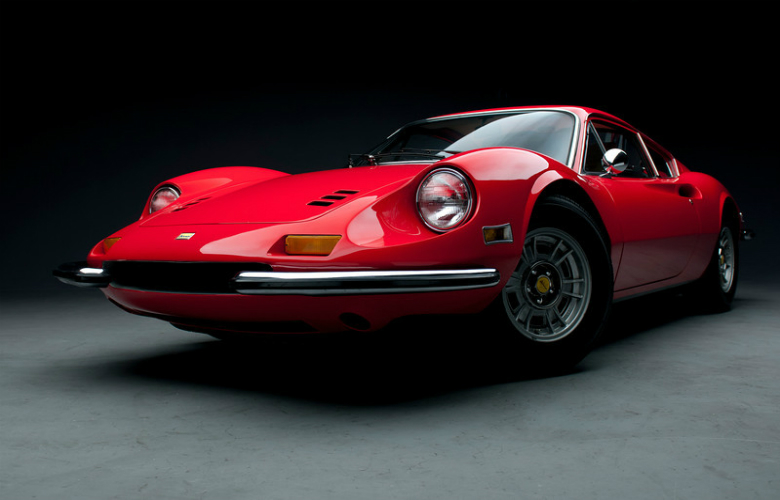
When is a Ferrari not a Ferrari? When it is a Dino 246! How so? Well, what defines a Ferrari? Why, the prancing horse logo, of course. But the 246 only ever wore Dino GT insignia. The firm's founder, Enzo Ferrari, wanted this car to be a marque all of its own. He had lost his son Alfredino prematurely, and the 'Dino' was a father's tribute. The car, though, was a Ferrari in all but name. Ironically, it might be considered the most iconic of the lot!
Again, when is a Ferrari not a Ferrari? When it is a Ferrari-Fiat! The two marques united to come up with a scheme whereby Ferrari participated in a Formula 2 racing series from which they would have been otherwise debarred. Their comparative lack of resources meant they were not in a position to manufacture the five hundred road-cars the race series' rules required. For the mighty Fiat that was not a problem! So inside every Ferrari Dino there lurks a liitle bit of Fiat!
Naturally, there is one aspect of the Dino unaffected by all this convolution. Breathtaking by way of beauty, the Pinanfarina and Bertone styling houses are visible in evey perfectly executed line and curve. No car can ever make up for the misery of losing a son! But it is to be hoped that the unforgettable Ferrari Dino was some small source of comfort to the great man.